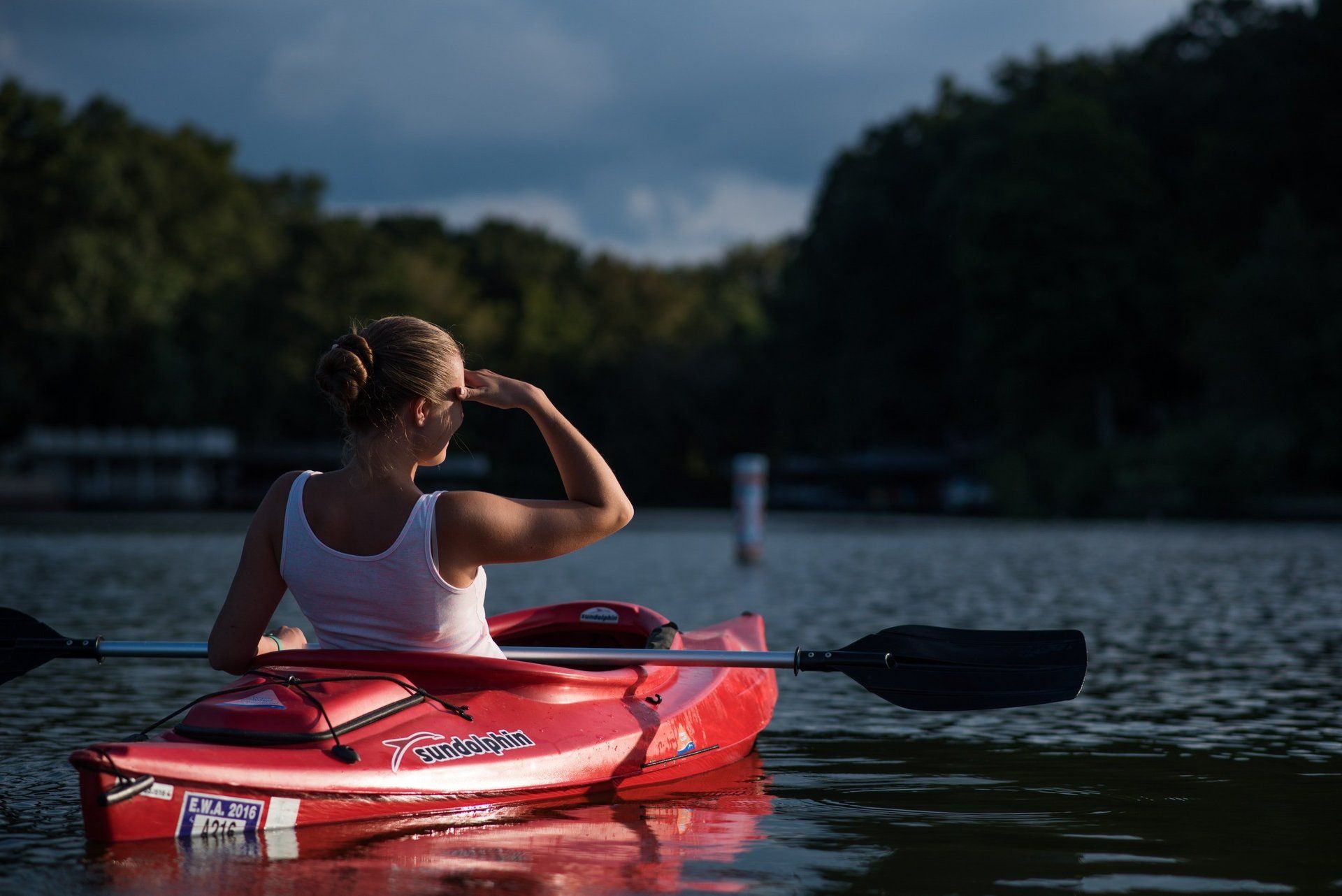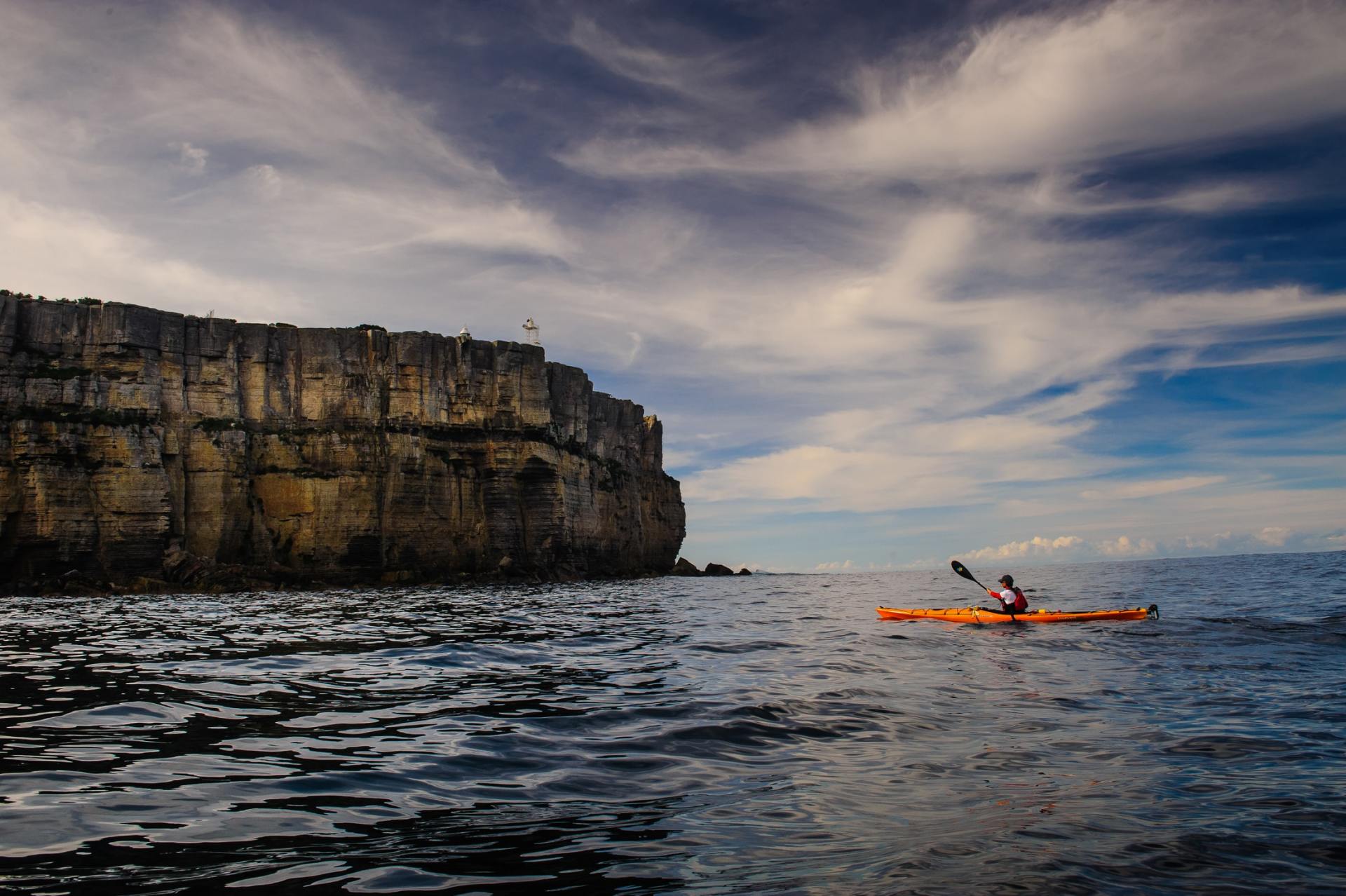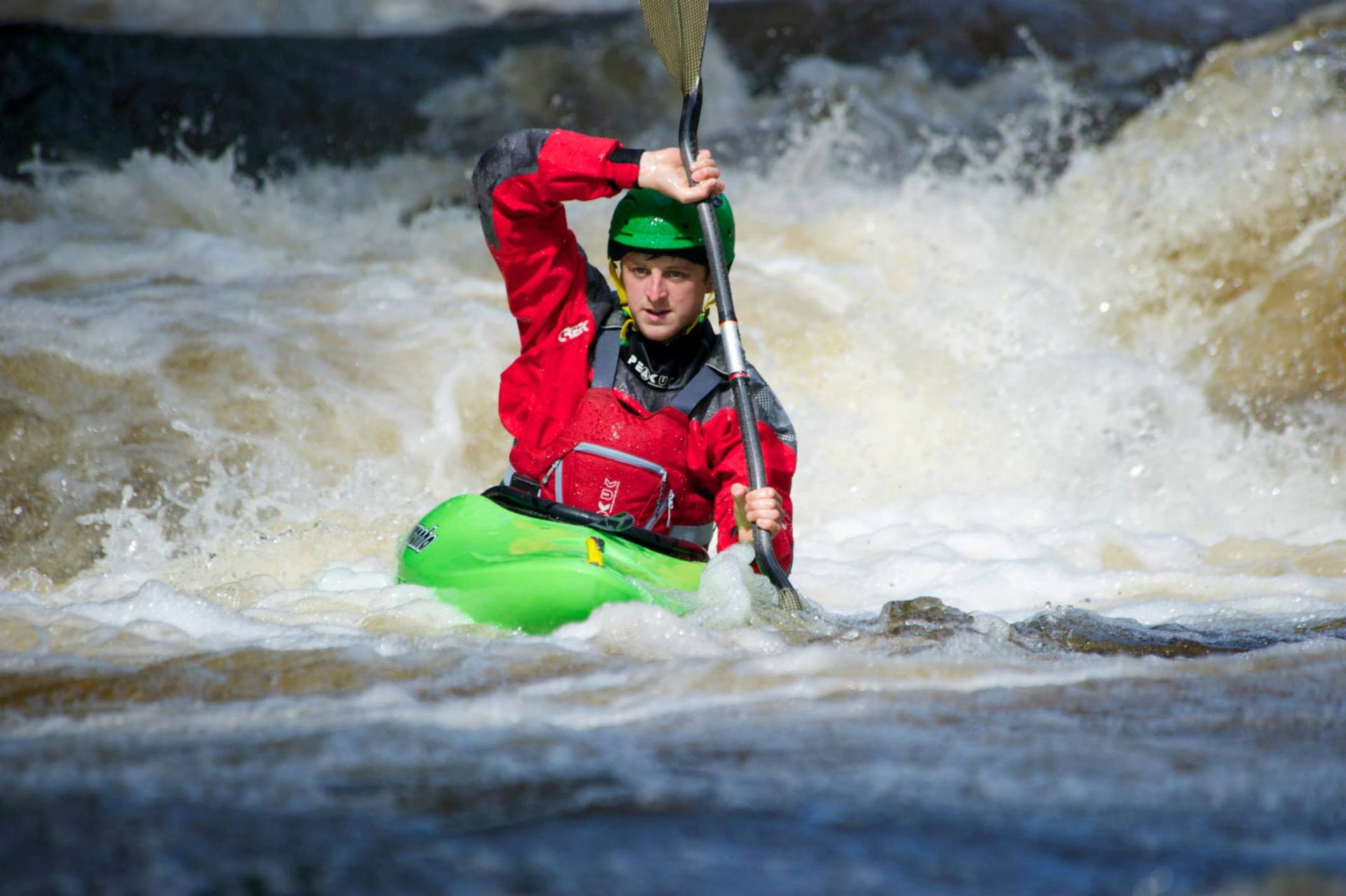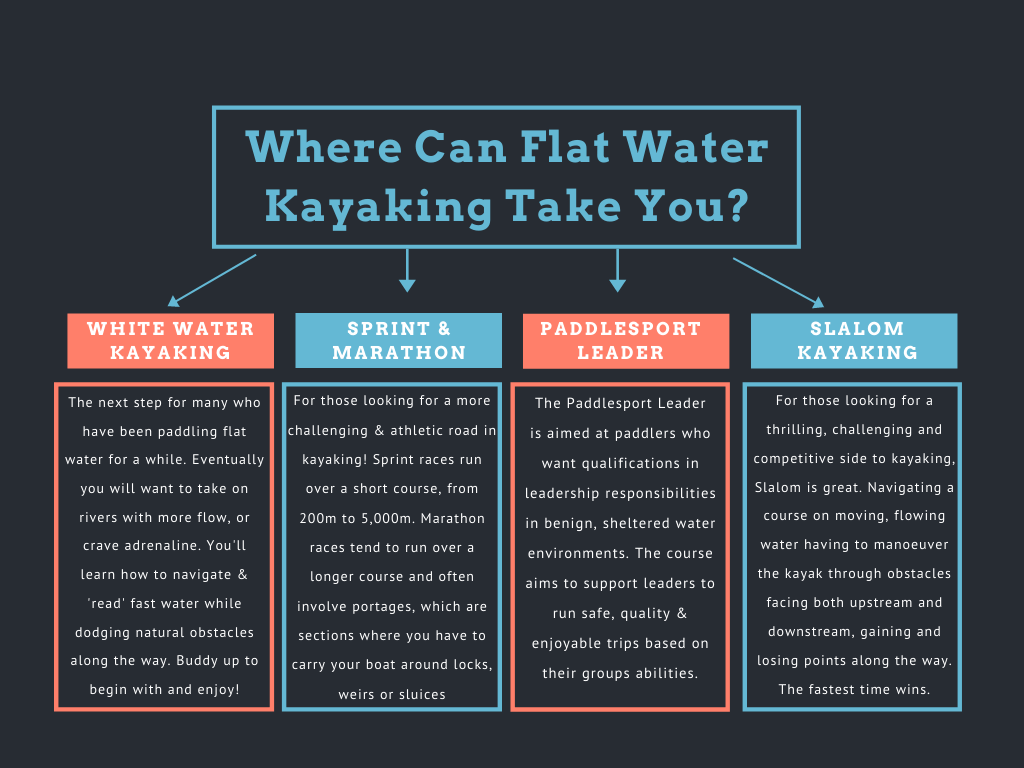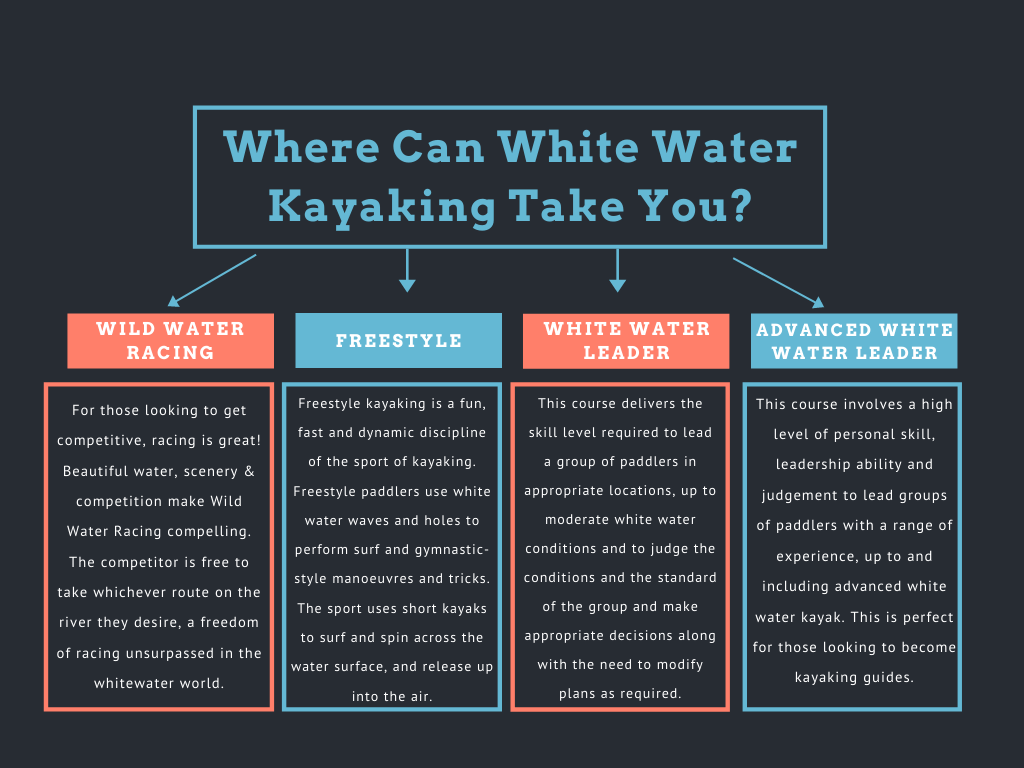- Home
- About
- Go Paddling
- #ShePaddles Cymru
- Qualifications & Awards
- Competition
- Resources
- Access to Waterways
- Ceufad
- Club Support and Affiliation
- COVID-19 Guidance
- Discounts and Special Offers
- Event Planning and Safety
- Insurance
- Craft Insurance
- Protecting Our Environment
- Safeguarding and Child Protection
- Report an Incident
- #ShePaddles Cymru Champion Club Programme
- The Canoeing Code
- Young Volunteers
- Shop
- Environmental and Access
- Standards For Deployment
- AGM 2024
Kayaking is a great activity that anyone of any age can enjoy!
Whether you're planning to paddle serene lakes, fast-flowing white water, the vast ocean or our peaceful canals, there is an area of kayaking you'll enjoy.
We have created this page to help give you all the information, tips and confidence you'll need to get out on the water safely. So... what is kayaking anyway and why is it so popular?
What is Kayaking About?
A Kayak is a boat that you sit down in, with your legs in front of you. Using a double blade paddle to control the boat, this will help you go forward, backwards and steer. Originally used for hunting, kayaking is now mainly used for recreational and racing purposes. There are boats for all different water types and paddlers. From flat water to the ocean, kayaking is an amazing way to explore the beautiful lakes, rivers and seas around us. Any age group can get involved, whether you're just kayaking for leisure or in it to compete, there is a kayaking activity for everyone.
How to Get Started
Whether you're interested in paddling fast water, flat water or heading out into the ocean, we highly recommend checking out courses available to get you started, confident and knowledgeable on the water. Joining a club is also a great way to learn, paddle consistently and better your skills and knowledge!
Do You Have Your Licence To Paddle?
Before you set off into the water, you must make sure you have a licence for the waterways you're paddling. Canoe Wales On the Water membership includes a waterways licence for over 4,500km of waterways within Wales & England, so you can paddle without worry. We will also send you regular updates about the waterways so you have the most up to date information, first.
Click the pics below to explore different types of kayaking!
Getting Started Flat Water Kayaking
Flat water is a popular starting point for most paddlers. Whether you're heading out on the lake, canals or gentle rivers, there are some beautiful adventures you can take without a current influencing your route too much. However, flat water can change depending on weather conditions, tides and more so it is important to understand what to do if this happens. If you're new to kayaking on flat water, why not take a course or join a club to learn the basics and build your confidence before heading out alone. In this section we will cover the tips, gear and safety information you need to get started flat water kayaking.
Tips For Flat Water Kayaking
List of services
-
Embrace The MovementItem link List Item 1
When you first get in a kayak on the water it can feel a bit strange. Try not to overreact to every movement, go with the flow and get used to the motion. It'll take time to get confident on the water, but if you embrace the movements you'll get the hang of it in no time!
-
Sit Up Straight & TallItem link List Item 2
Imagine there is a string pulling you up tight from the top of your head. This will encourage you to sit tall and straight, spine extended, feet in front of you. This helps you keep your balance, engage your core and control the kayak. As well as preventing sore backs later on!
-
Slow & SteadyItem link List Item 3
When starting out it is more important to focus on your technique, build your confidence and start to understand how the boat moves. Start slowly and once you feel your ability and confidence has improved, you can try going faster!
The Gear You'll Need for Flat Water Kayaking
List of services
-
Kayak & PaddleItem link List Item 1
Of course you will need a kayak and paddle to get started. Whether you're hiring, borrowing club gear or buying your own, make sure your kayak is water-ready before you launch it. Water out - bungs in!
-
Buoyancy AidItem link List Item 2
A buoyancy aid will keep you afloat if you come out of the boat or get separated from it. Although you're starting on flat water, conditions can change quickly. This is a vital piece of safety gear and you should not be paddling without it.
-
WetsuitItem link List Item 3
You want to be warm in the water as well as out of it. In the summer you may find a wetsuit or neoprene layers are all you need to stay warm. In the colder months you might want to invest in a thicker suit or a drysuit with warm layers underneath.
Where Can You Paddle?
- Lakes
Lakes can be a perfect place to practise your flat water paddling skills. Many have beautiful spots to explore by the water's edge.
Always check the conditions and know your limits before paddling on one of the many lakes in Wales.
- Touring Rivers
There's some brilliant flat water paddling to be done on our Welsh rivers. Whether you want to spend a few hours or a few days on the river, there is a river for all abilities!
Remember to check whether you need a waterways licence to paddle (you can find more information on licensing here) before you get on the water.
- Canals
Wales has a handful of canals you can paddle, and some of these stretch on for miles. Which is perfect for a day trip or a multi-day expedition!
Remember, you need to have a waterways licence to paddle canals in Wales (and many in England as well). Find information on licensing here!
Getting Started Sea Kayaking
The ocean draws us all in. The vast, open space and scenery that can be seen from the water encourages us to get out paddling. But the ocean can be a formidable place and conditions can change rapidly. So, it is best to be prepared as much as possible before you head out on the water. As a beginner, you might consider taking a course or joining a club to get started and build your confidence. In this section we have all the tips, gear and safety notices you need to know to get started Sea Kayaking.
Tips For Sea Kayaking!
List of services
-
Know Your LimitsItem link List Item 1
The ocean is a beautiful place to explore but it can also be dangerous. So, make sure you know what you're doing before you launch. From understanding different weather conditions, to knowing tide times and currents, there is a lot to factor in. Know your limits and always have a plan B!
-
Practice Makes PerfectItem link List Item 2
There is a lot to think about when beginning sea kayaking. From paddling the boat and steering with the rudder to learning to roll. Try not to rush, practice makes perfect and the more you get out paddling, the more you'll learn. If you're new to ocean paddling, why not try practising on lakes or harbours and estuaries where it's a bit more sheltered first.
-
Keep The Paddle Ahead of Your HipItem link List Item 3
Your paddling strokes are more powerful and filled with purpose when they are in front of you. Once behind you, the paddle is no longer driving power to the boat. So, try and keep the paddle ahead of your hip and really drive it through the water. This will also help your posture and stop your arms and core from getting tired too fast!
The Gear You Need for Sea Kayaking
List of services
-
Buoyancy Aid!Item link List Item 1
Designed to keep you afloat in water if you happen to end up in it. This is the most important piece of paddling gear and you should not be on the water without it. Ranging in different sizes and styles, these should always be worn when sea kayaking.
-
Outer & Inner LayersItem link List Item 2
You want to be warm in the water as well as out of it. As a beginner it is likely you might capsize, so layer up with a wetsuit and a cag (waterproof paddling jacket) in the warmer months. When it gets colder you might want a drysuit with warm underlayers. Remember the ocean is cold most of the year!
-
FootwearItem link List Item 3
When sea kayaking it's likely you'll launch from a beach, rocky shore or pier but you might end up somewhere more rough. Having shoes on will keep your feet protected when you exit and enter the boat. But it will also keep them warm inside the boat as well!
Where Can You Paddle?
- The Ocean & Seas
Sea Kayaking is a great way to explore our oceans and the Welsh coastline. From West Wales' sandy beaches to the raging sea cliffs and tidal races of Anglesey, there's something for every paddler.
Remember to understand your limits, buddy up, and know the tides, weather conditions and currents before paddling.
- Harbours & Estuaries
When practising sea kayaking you want to feel comfortable and confident. Before setting out to sea, why not paddle in sheltered harbours and estuaries before heading out into the wild seas?
Always make sure to check the rules and your rights before paddling in these areas before you set off.
- Lakes
Lakes are a great place to practise your skills, explore and enjoy adventures. Welsh lakes range from small stretches of water to larger lakes you could spend days paddling around.
Getting Started White Water Kayaking
White Water Kayaking is an exciting sport to get into and it is growing with popularity. We recommend when beginning white water kayaking that you take a starter course to learn the skills and find a club to paddle with regularly. The skills and knowledge you need to paddle white water won't come overnight and can be built up steadily. In this section we have done our best to give you an overview of the most important tips, gear and safety information to get started.
Tips for White Water Kayaking
List of services
-
Learn to Read the WaterItem link List Item 2
Kayakers often describe the river as a book: there are twists and turns but the language of the river will give you the directions. By taking a beginners course or joining a club, you'll learn to read the water and begin to understand how to plan and lead routes down the river. This skill is vital as each river is graded differently.
-
Sit Up Straight & Engage Your CoreItem link List Item 1
You may be holding the paddle in your hands and move it with your arms, but the power comes from your core. By sitting up straight and engaging your core, this will take the pressure off your arms and shoulders and direct it to your chest. Your strokes will improve and your control will be stronger.
-
Learn to RollItem link List Item 3
Most beginners who take on white water kayaking will want to learn this fast. "Rolling" is when you capsize and while in the boat, right yourself again. When you capsize, your spray deck will keep you in the boat and you would have to release it to get out. But if you can roll, you can spin the boat and yourself back upright - and keep paddling!
All The Gear You Need for White Water Kayaking
List of services
-
Buoyancy AidItem link List Item 1
A buoyancy aid will keep you afloat if you fall out of your boat. As well as that, most BA's have pockets on the front for you to store safety gear and waterproof phones. Having a BA on will keep you afloat until you reach shore, are rescued or can get back in your boat. You should not be paddling without a bouyancy aid!
-
Inner & Outer LayersItem link List Item 2
That river water is chilly - to keep warm you might need extra layers. A wetsuit during the warmer months paired with a cag (waterproof type jacket) is great. But in the colder months you might want to invest in a dry suit and some warm under layers. Remember, you want to be warm in the water as well as out.
-
HelmetItem link List Item 3
A helmet keeps your head protected when paddling the river. Under the water and down the banks of the river are a lot of hazards. From rocks to fallen branches, you want to keep your head protected if you were to capsize, roll or end up swimming down the river. You should not be paddling without a helmet.
Where Can You Paddle?
- Touring Rivers
Although white water kayaking normally demands fast water and exciting rapids, when you're just learning, touring rivers are a great place to explore. Some are flatter than others and each will have sections of faster flowing currents or even small stretches of white water. This is the perfect place to get the feel of the boat and refine your skills before you hit the rapids.
Remember to check whether you need a licence to paddle these rivers before launching into them!
- White Water Rivers
As a white water kayaker, these are the more exciting places to paddle. Rivers are graded from 1 (easy) to 5+ (incredibly hard) and you should only paddle grades you are comfortable with. Each river rapid grading will require different skills, have different obstacles and need some practice.
Remember you will need to have a licence for some of the waterways you'll be paddling. Be sure to check this before you get on the water. You can find information about licencing here!
- Tidal Rapids
Wales has two famous spots to paddle tidal rapids - Anglesey and The Bitches in Pembrokeshire.
These are absolutely amazing places to paddle, but both spots can be hazardous for inexperienced paddlers - and we would recommend you paddle them the first time with other experienced paddlers.
OUR PARTNERS
Canoe Wales | All rights reserved.
Website Design by Website Sorted
CANOE WALES, CANOLFAN TRYWERYN, FRONGOCH, BALA, GWYNEDD, LL23 7NU | Company No. 02478971 | VAT No. 115151262


